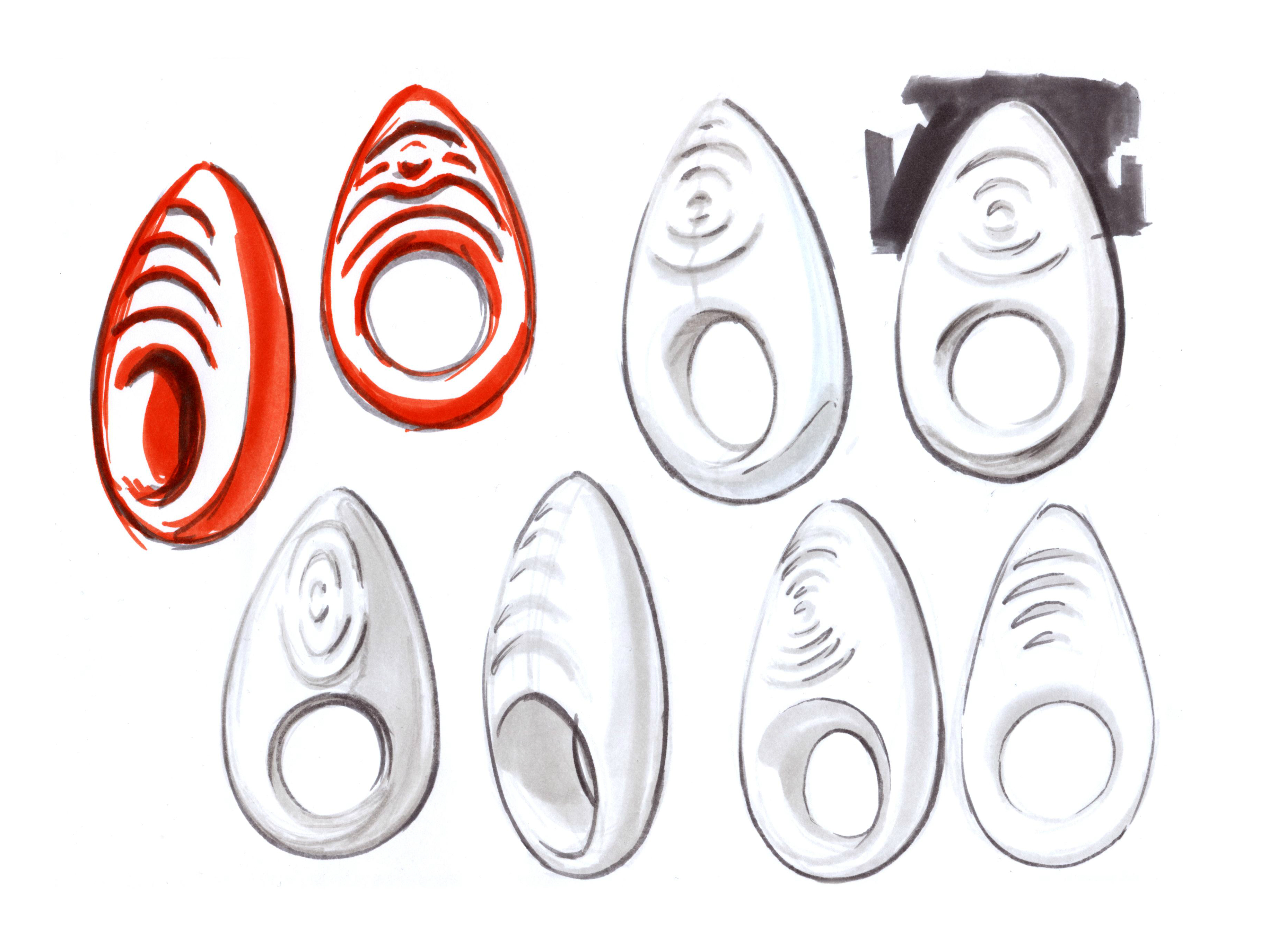Saying you’re good in bed is like saying you’re a good cook. In order to make such a brazen assertion, you’d better be able to back those words up with cold-hard facts, or at least some unbiased third-party testimonials. We can talk a good game about our jump shot or our dancing abilities, and for many of us, there are some things we just know we’d be great at should the opportunity arise. Maybe it’s freestyling at Chance the Rapper-like levels, or creating an app that would blow everyone’s minds. Sometimes, all it takes is an idea, and the belief that others will love it as much as you do. So much great art and design has sprung from these concepts, from indie films to guitar pedals to sex toys.
Let’s presume that like most of the population, you do not already work in the sex toy industry. You’ve got a killer idea, but not the built-in infrastructure and industry contacts necessary to get things started. As the saying goes, you’ve never done this before. You may not exactly know how to make a sex toy, but you’re confident in your idea’s design and possible appeal. No sweat, friend. That fact actually puts you in pretty good company. Stories of outsiders who have broken into the industry and done quite well for themselves are numerous. We recently caught up with a few of them to give you a first hand look at what it’s really like, from conceptual design to manufacturing and marketing. It’s a fascinating blend of art and science, and like all good stories, well, it’s got a happy ending.

Step One: The Idea
Jakub Konik, founder of Lovely, had been working in the tech industry for nearly six years when he got the itch to do something different. “For quite some time,” Konik explains, “all the sex toys in the world had virtually no features besides vibrations.” Konik felt that sex toys were capable of their own digital evolution, taking a similar path as home and lifestyle products, becoming more interactive, helpful, and more elegantly designed. Someday, says Konik, they could become “as smart as all the other products in our lives, eventually bringing more value to their users.” Right from the start, he wanted to make something that couples could enjoy together.
Meanwhile, halfway across the world, David Yu, founder of what is now Svakom was having similar thoughts. He had spoken to groups of women about their own expectations when it came to adult toys, got the sense that something was missing from the market, and wanted to assuage that need.
Step Two: Assess Your Finances
Hey, the industry may be a bit nontraditional, but this is still a new business venture. Talk about money early and often. You’ve got to be comfortable looking your money in the eye and seeing what kind of runway you’re dealing with. So, how much cash will you actually need? Well, it depends. Konik spent his life savings on Lovely’s development and also launched an IndieGoGo campaign to supplement his funding. There is also the opportunity cost of creating your sex toy. Are you going to quit your job to devote all of your time to this? Do you have enough money to spend on a couple of round-trip flights to China? (We’ll get to that in a minute). These are some of the many important questions to figure out early on.
Step Three: Assemble Your Team
If you’re new to the sex toy business, it’s doubtful that you’ll just automatically know how to do everything yourself. Sure, it’s your great idea, but can you create models from plastic, organize focus groups, code a website, build a marketing plan and take decent commercial photos? It’s essential to tap on people you know and outsource when you need to. Konik brought a sexologist and an engineer on board at the very beginning. Right from the start, he also knew he wanted his product to be for couples, so what did he do? He reached out to some people he knew and trusted (it didn’t hurt that they were both industrial designers by day). They tested out dozens of couples’ toys that were already on the market and reported back to Konik what they liked.
And what do we mean when we say that this couple ‘tested out’ already-existing products? Well, exactly that. They had a lot of sex using dozens of different toys and gave Konik their opinions with brutal honesty. If you think you’d find these kinds of discussions awkward, you may be in the wrong business. This feedback helped mold and shape Konik’s final designs for what eventually became Lovely.
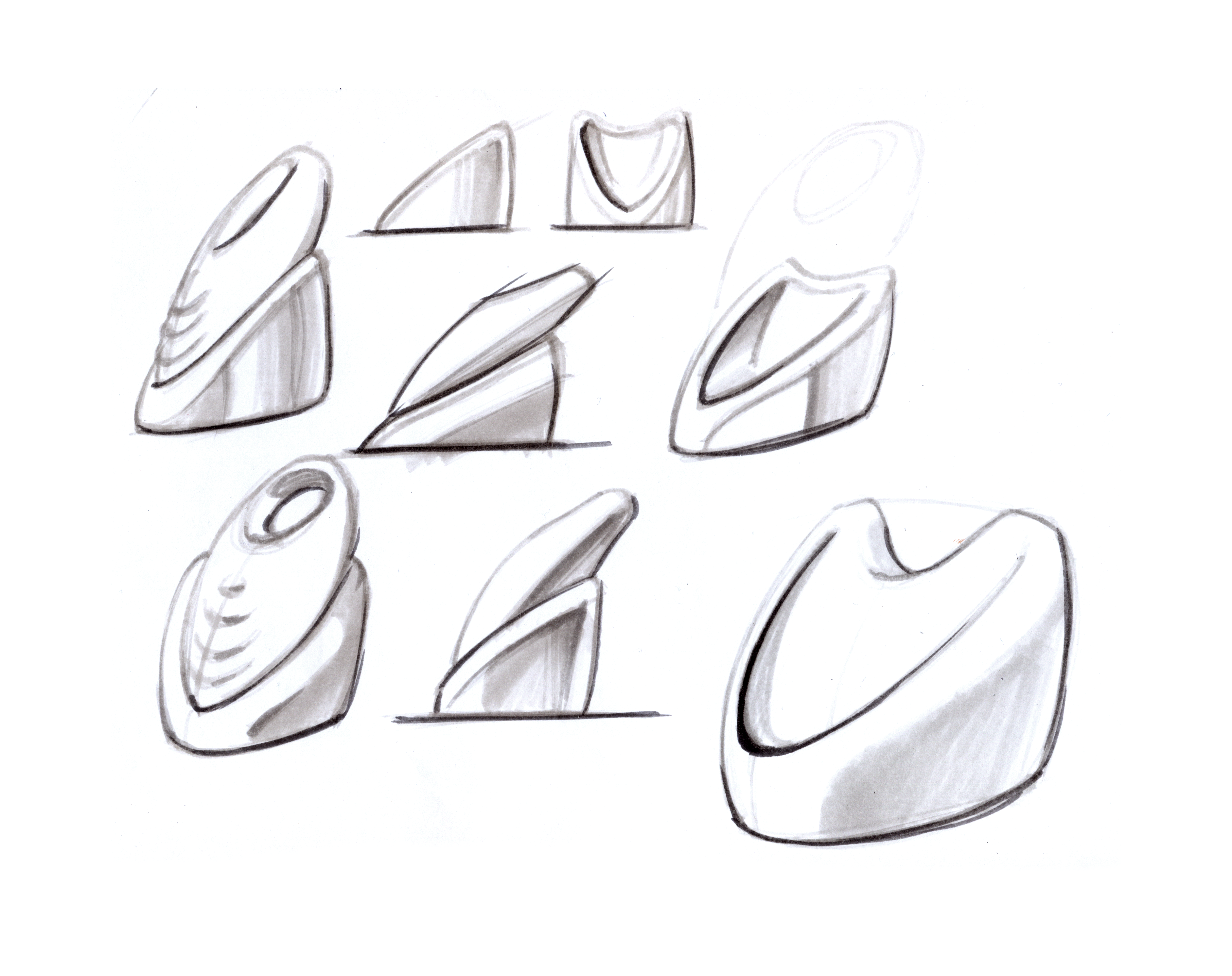
Step Four: Research and Prototyping
Konick’s idea was to have a ring, an ‘intimate wearable’ with an app, that would help couples enjoy their time in bed together even more. Picture what is commonly called a cock ring, made from ultra-soft material with special added intelligent features and a docking station that sits close by on the nightstand. That’s an easy thing to say, but how do you actually build it? Before you even break out the modeling clay or colored pencils, slow down for a minute. Consider creating mood boards to help you visualize what it is you want your sex toy to be. You can make boards that exemplify shape, color, texture, or even the feeling or emotion you want your customers to associate with your product. It’s a great way to set the tone for the long journey ahead of you.
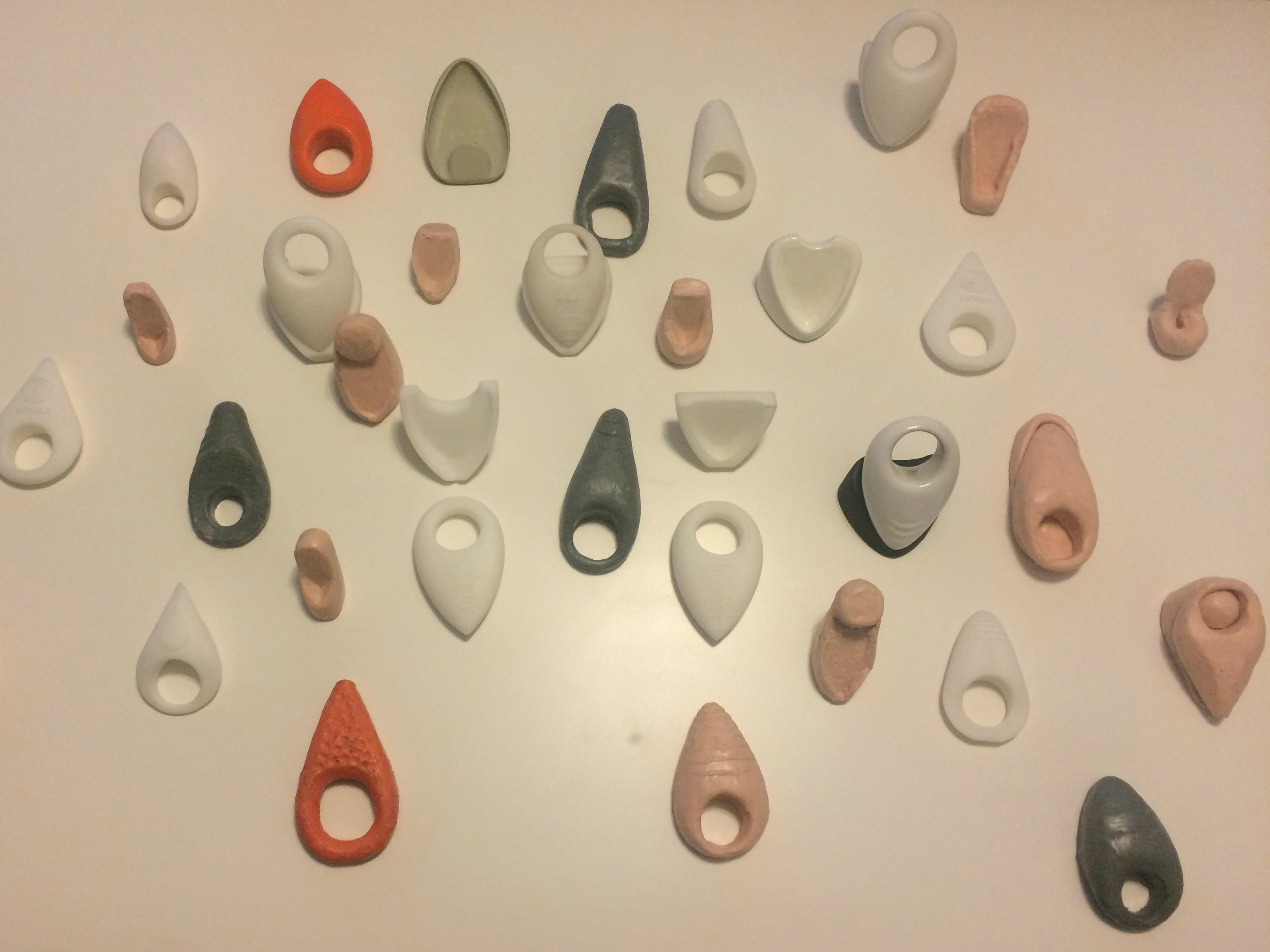
After a few rounds of sketching, the Lovely team made all sorts of prototypes, starting with plasticine, then moved on to 3D printing, which was an especially helpful and cost-effective way to test assumptions and different kinds of shapes. As the design phase became more advanced, they moved on to silicone vacuum casting and compression moulding. This method yielded better results, but was definitely more complex and expensive. From his home base in Europe, Konik traveled around the continent to different factories, but he says they could not provide him with the quality that he really wanted. All that changed, however, when they went to China.
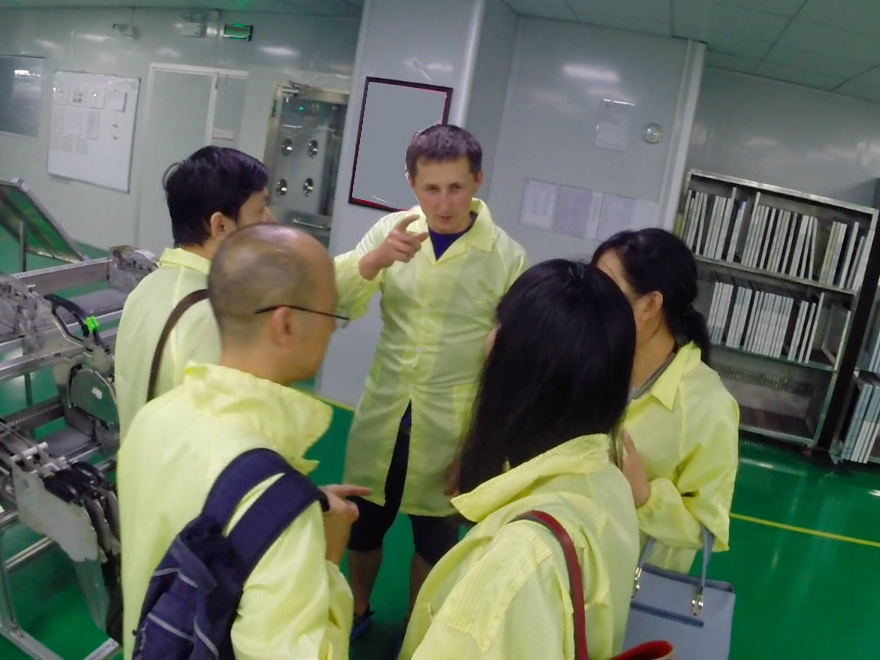
Roughly 80% of all sex toys are made in China; the factories are incredibly well equipped to create the necessary materials and get the silicone just right. In fact, medical-grade silicone is one of the more common materials used to make sex toys. This is because of FDA regulations within the United States regarding silicon that is manufactured to be used for medical purposes, and sex toys fall into this category, along with tubing, respiratory masks, and other simple medical devices. It’s a law you can’t really get around, and for good reason. All of Svakom’s toys are made from 100% medical-grade silicon, and for Konik and the Lovely team, the twenty-hour plane ride to Hong Kong was well worth it when he finally touched the first production sample that he was certain would be the one. “I knew we got it right,” Konik remembers. “It was smoother than my skin.”
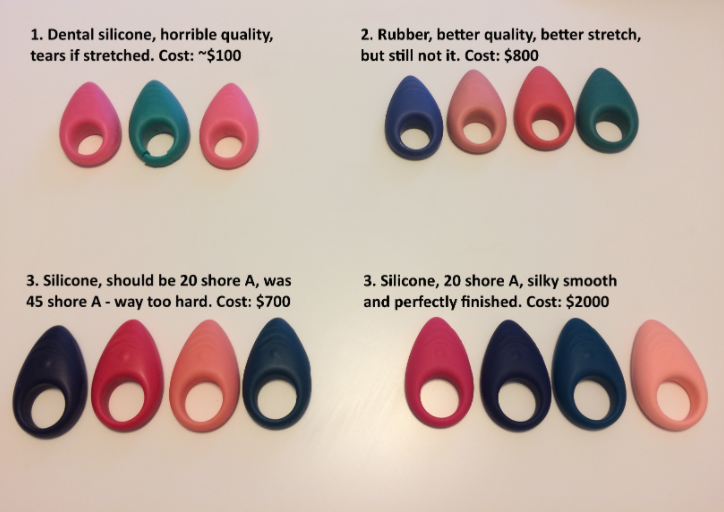
Step Five: Test, Learn, Repeat
A crucial part of the process. After a sample run is created, Svakom sends about ten to fifteen samples out to reviewers. For the Svakom team, their Echo and Trista toys took an especially long time to get right because of the technology involved. And when that happens, you just have to keep testing. All kinds of factors can delay production, from faulty toy mechanics and silicone quality to simple manufacturing requirements. Sometimes it can take years, especially for the more complicated products. Yeah, you heard that right - get ready for a possibly very long haul.
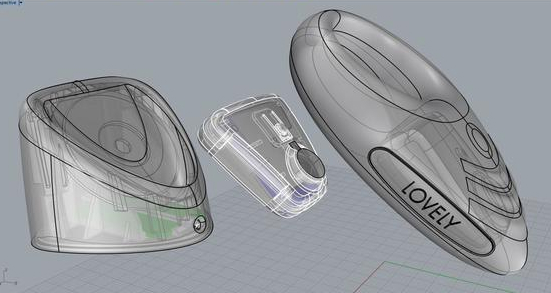
Konik and the Lovely team again returned to the couples who were helping them through this trial-and-error process. Since Lovely is worn around the most tender part of the male anatomy, not only did the texture have to be perfect, but the silicon’s ability to stretch without compromising shape was essential. Cheaper materials would tear if pulled at too hard. In the end, they landed on a medical-grade silicone that was so soft and stretchy it could fit around the base of an eggplant, yet still stay where it needed to. There’s also the matter of Lovely’s electronic element. There’s as much technology packed into a Lovely as any fitness bracelet on the market. This meant sourcing components for the tiny circuit boards that fit inside the device, and going through half a dozen iterations to get the right shape.

Step Six: To Market, To Market
When Konik and the Lovely team first started out, every dollar was sunk into product developing, and they didn’t have anything left over for marketing. This didn’t end up being that big of a deal, as a lot of their advertising ended up coming from PR. Hey, sex is a popular topic, especially given the unique angle that Lovely was bringing to the table. Their marketing strategy ended up being very organic, with dozens of distributors and retailers from all over the world reaching out to them first. But sex is everywhere (especially online) so don’t rely on an already saturated market to naturally float you to the top.
Svakom’s marketing, on the other hand, is more targeted. They do a lot of online marketing across various channels such as Google Adwords and YouTube. As you’re probably aware, every kind of product gets reviewed by influencers on YouTube, from lipstick to potato chips, and as it turns out, sex toys are no exception. Svakom’s marketing team pays special attention to popular sex toy reviewers with a high number of followers, especially those who live in countries where their customer base already resides. They have had particular luck with the United States, Brazil, and Russia, especially given the more culturally open attitudes about sexuality in the latter two countries.
Then there’s trade shows. Svakom’s marketing team and B2B team advise getting into the trade show experience. There are sex toy industry trade shows in Shanghai, Germany, the United States, and elsewhere. These shows will give you an opportunity to catch up and network with all kinds of people, meet up with distributors, customers, and more. Be sure to bring gift boxes and free samples.
When you take a step back, it isn’t hard to see that the business of designing and building a sex toy is, well, a lot like other business ventures. Vision, risk, determination, finances, testing, execution, marketing - it’s all there. Be ready for setbacks, surprises, and (hopefully) celebrations. Getting the look and feel of your product exactly right is essential, and when it all comes together, it’s an absolute pleasure.
images via Jakub Konik

